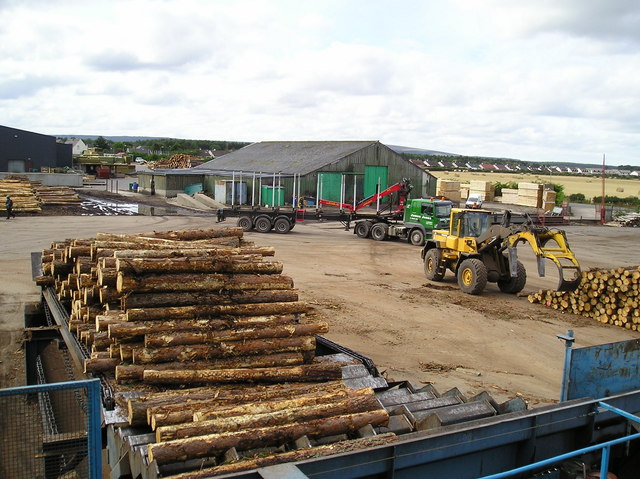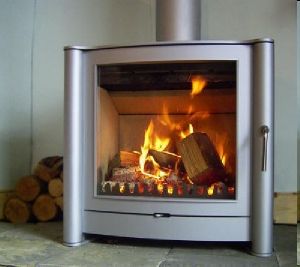
Increased demand for wood burning appliances has not only resulted in increased demand for logs but has also raised some concerns about the quality and availability of this very popular energy source. With the help of the experts we take a closer look into what's involved in producing logs.
Fuel quality is pretty much taken for granted. Although our gas bills carry some techical details of the energy coming down the pipe, few people take any notice. It's exactly the same for electricity and oil, we've got used to high quality energy and no longer take any notice of it.
Wood on the other hand is all together different. There are over 10,000 tree species in the world and more that 100 in the UK (only 33 of these are native). These generally divide into hard woods and soft woods, hardwoods native to the UK include Ash, Beech, Elm, Maple and the mighty Oak with Yew, Scots Pine and Juniper among the softwoods.
In short, if you're going to burn wood you have a wide selection to choose from and as we're about to tell you, an even wider choice of quality.
As natural living organisms, trees drink and retain a very large amount of ground water absorbed through their roots and obviously fire and water do not mix. The tree, or more correctly the moisture content of a tree varies with it's species and maturity and is greatest when a living tree is cut down. When left to do it's own thing, the tree will start to dry out, but that would take a
very long time.
Sawing a tree into smaller pieces and splitting the resulting logs with dramatically increase the surface area of the wood and reduce the drying time considerably. Artificially drying (or kiln drying) accelerates the process quite considerably but it is not just a matter of applying heat... Theoretically, the maximum amount of energy that could be released from burning wood will occur when the moisture content is 0% but this means the wood would disintegrate and be useless to use in a stove or fire.

As Nic Snell of Certainly Wood explains, "It is really a relatively simple economic balance. Drying uses energy which must be balanced against the heat gain from burning 'dried' wood. We believe that logs for wood burning appliances should have a moisture content of between 15% and 25%. At this level, combustion is excellent and any remaining moisture is quickly driven off by the heat intensity.
In comparison, wood with a moisture content between 15% and 25% produces four and a half times as much heat as freshly cut wood. Putting this another way, 10kg of dried wood would produce 45kW where as the same amount of fresh wood would only produce 10kW of heat.
And this moisture content issue is the main problem regarding quality of wood for stoves and fires, visit any garage or DIY shop and you're almost guarenteed to see nets of wood for sale on the forecourt or by the main entrance but in most cases if you ask where the wood is sourced from and the moisture content you may not get an answer. Obviously some of this wood may be of high quality and may well have been kiln dried or at least well seasoned, but all of that work is undone if the wood is left outside in the weather so the wood can absorb any and all rain or dew that settles on it, and this combined with any that is freshly cut makes this wood very wet and totally unsuitable for a stove or fire.
For example, watch what happens next time you see roadworks that involve the felling of a tree. Either a shredder is brought in and everything is shredded and reduced to being buried in the ground. Or a group of men normally armed with chainsaws and traditionally in a white van appear, cut the wood and disappear again. They normally take the wood back to a yard where it is split and netted and then on the market within a couple of days! This results in a very low quality wood that will release very little energy and can do some quite considerable damage to stoves, chimneys, flues or even the environment!

Although just a small fraction of the wood felled in the UK is used for fuel the equipment used to sustain just a small, but rapidly expanding market is quite substantial. One company, well hidden amongst farmland and orchards boasts a site occupying over three acres, all devoted to turning trees into kiln dried wood logs.

Large Quantities of harvested hardwood is being continuosly deliveryed to the site and stacked with precision that would probably beat most Supermarket shelves! These 'trees' are often up to 45cm in diameter and as king as 3 metres! They are then cut to lenghts of abouve 250mm and split into up to 16 segments. The machine that does this job uses pure brute force to split the logs, using up to 4 tonnes of pressure to get the job done!
These logs are then transferred to the drying operation where brute force is replaced by technical prowess and knowledge as the drying system comes into force.
The wood is then transferred into the drying kilns, in reality most of these will be ex-shipping containers that have been adapted and modified with all the hardware and safety equipment that the drying operation demands.
Getting the wood down to the correct moisture content has been refined and is now more science than guesswork, early experiments show that when taken too far the wood could spontaneously combust so all the drying kilns contain sensitive equipment to tackle any problem should it arise, which may even come to flooding the container itself with water!
Reducing the moisture content to between 15% and 25% takes approximately 32 hours per container, rather dramatically this reduces the volume of the wood by 20%. Add this to the cutting of kindling and storage for the finished dry woods and you quickly realise that there is more the firewood than just cutting down a tree!

















